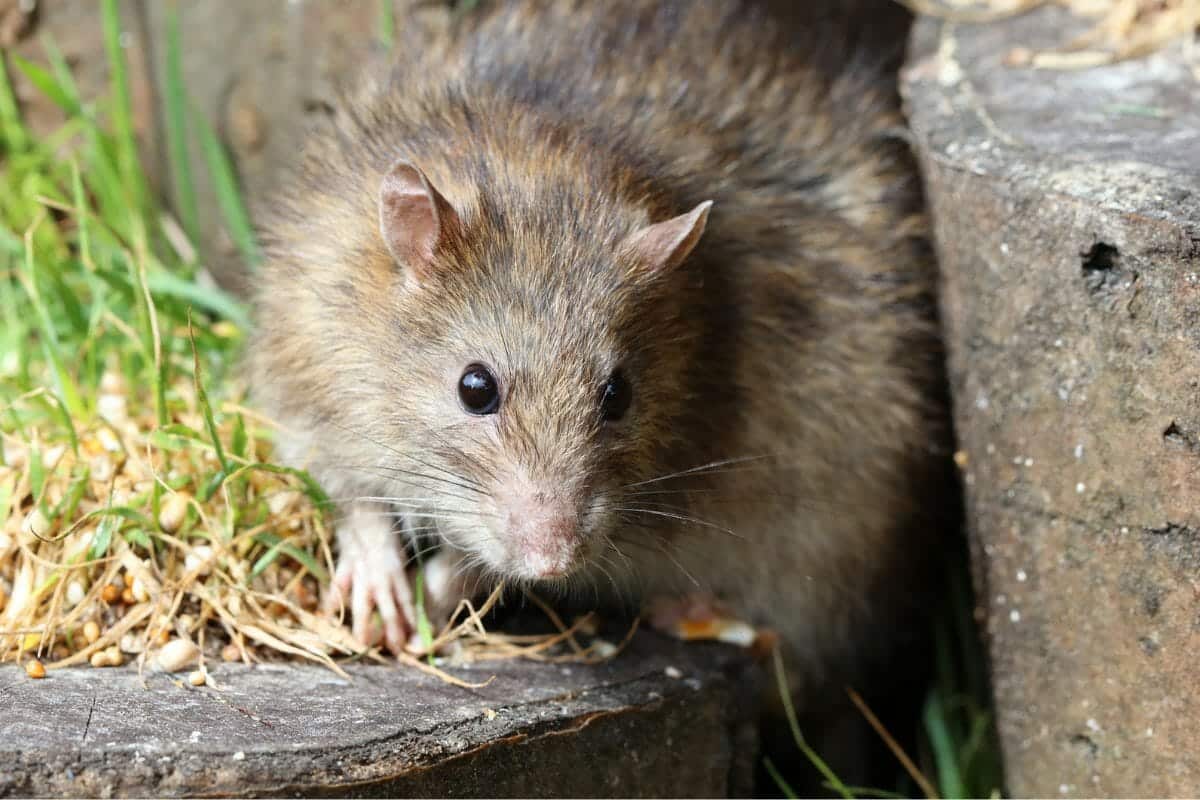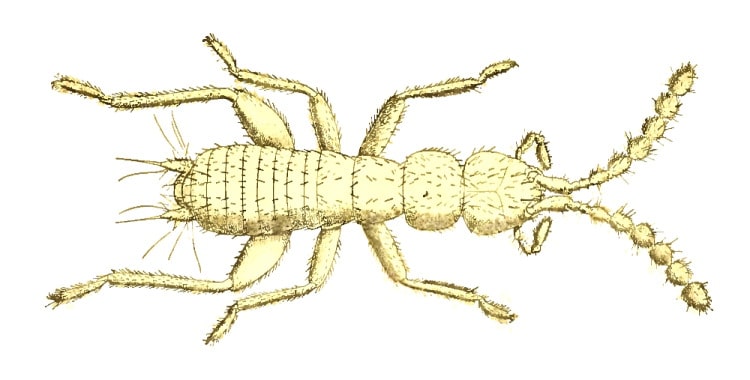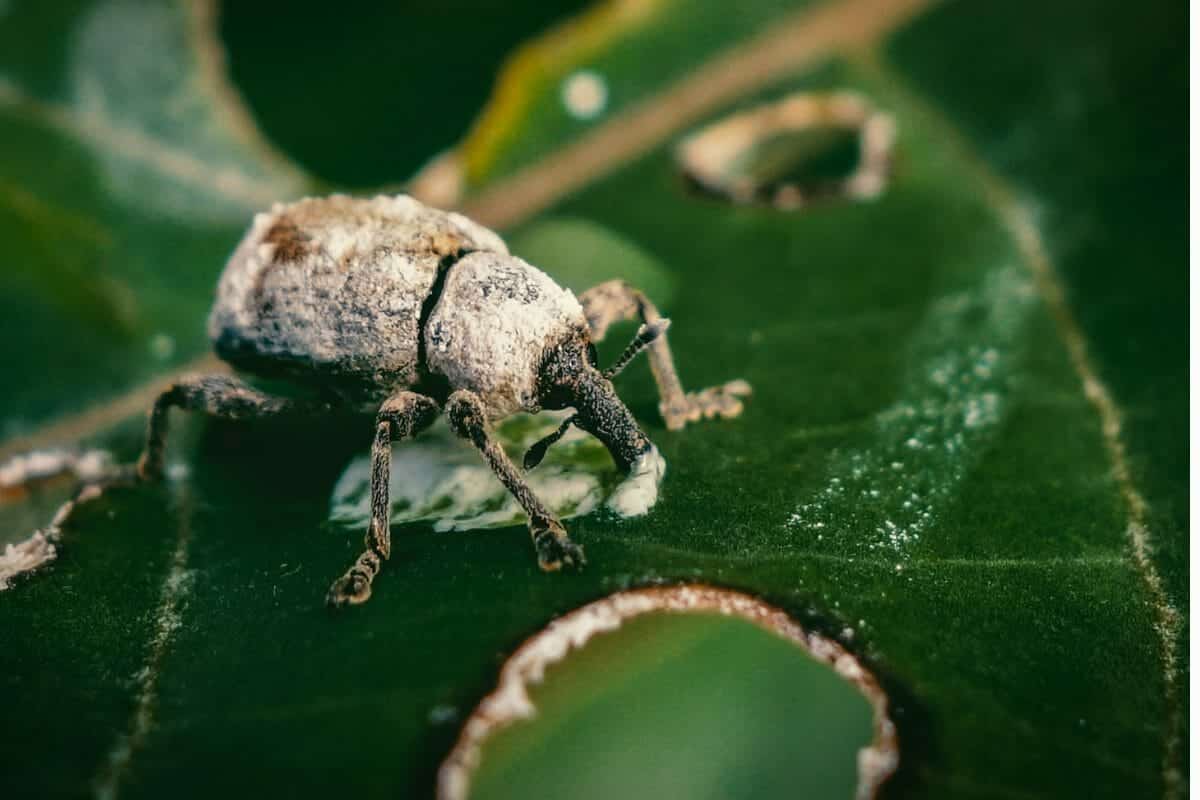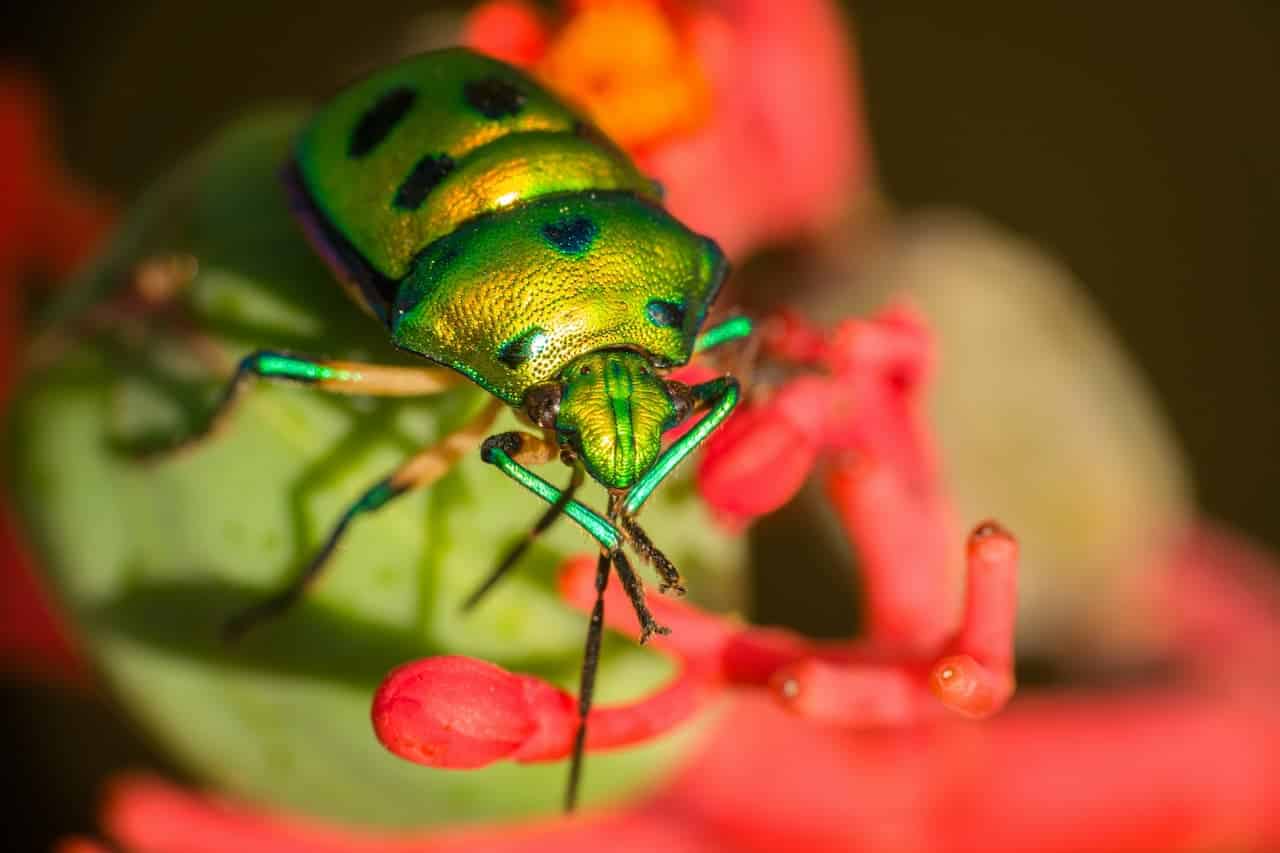Lady Bugs
Coccinellidae: The Curious Larvae & Life Cycle Of The Lady Bug
Lady Bugs (Family Coccinellidae a.k.a Lady Birds or Lady Beetles) are among the most familiar and best loved of the commonly identified insects.
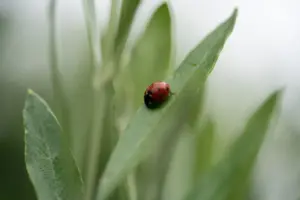
They are generally brightly colored and are symbols of good in many myths. There are more than 5,200 species world wide and of these 42 regularly occur in Britain.
Ladybugs are described as small to medium sized beetles, 0.3 mm to 10 mm long with a head that is retractable into the pronotum (the dorsal surface of the first thoracic segment). The antennae are usually 11 segmented, short and clubbed. The elytra completely cover the abdomen, meet all the way down the middle of the insect’s back and are never longitudinally ridged. The legs are short and retractable under the body.
Many exude unpleasant oils from joints in their legs as a defense mechanism.
Ladybird Meaning
The name Ladybird arises from the vernacular name for the common 7-Spot Ladybird (Coccinella 7-punctata) in Europe. Our Lady’s Bird: the Lady in this case being ‘The Virgin Mary’ from Christian Mythology.
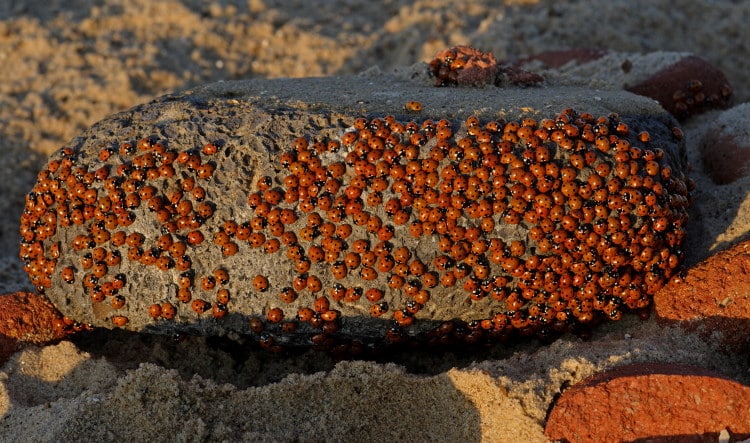
The red base colour of the elytra is said to represent her cloak and the 7 black spots to represent the ‘Virgins’ 7 joys and 7 sorrows. Relating Ladybirds to the Virgin Mary is not unusual; in 1991 Dr. A.W. Exell published his book “History of the Ladybird” in which he cites 329 common names for the Ladybug from 55 countries, of which over 80 refer to the Virgin Mary and more than 50 are dedicated to God.
Contrarily one Italian name is ‘Galineta del Diaolo’ or “The Devil’s Chicken”. Other names include the Swedish Himelska nyckla or ‘The Keys of Heaven’ and the Cherokee ‘Great Beloved Woman’.
Ladybird ladybird fly away home, Your house is on fire and your children all gone. All except one whose name is Anne Who hid herself under the frying pan.
This is the Eastern Australian version of a little ditty which I learned as a child and I later found out had spread around all the English speaking parts of the world – in one form or another- since its creation (believed to be in the 19th century).
Its existence demonstrates the strong ‘presence’ of the Ladybug in the mind of non-entomological people. Few other insects have such a positive image in people’s minds.
Coccinellidae Ecology
Most Ladybugs are carnivorous on the larva Aphids (Hemiptera, Homoptera, Aphididae), both as adults and as larvae. Four of the 42 British species are are vegetarians; the Orange Ladybird (Halzia 16-guttata), the 24 Spot Ladybird (Subcoccinella 24-punctata), the 22 Spot Ladybird (Phyllobora 22-punctata) and the 16 Spot Ladybird (Tytthaspis 16-punctata).
Some species are generalists, feeding on a wide variety of aphids and are easy to find i.e. the 2 Spot Ladybird (Adalia 2-punctata).
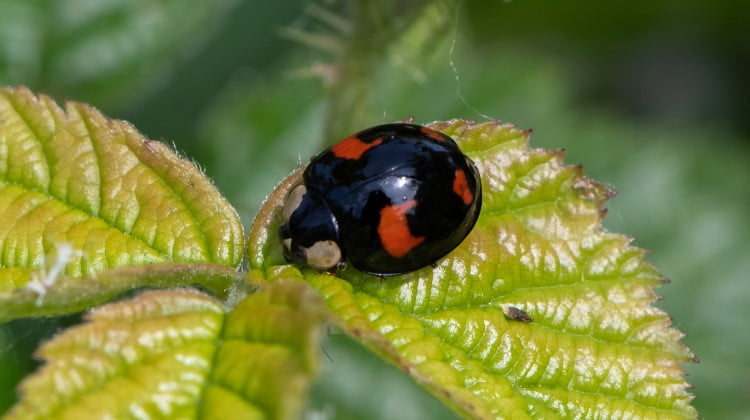
Other species are scarcer and more difficult to find, such as the Pine Ladybird (Exochomus 4-pustulatus) which is restricted to pines by its food source; the Hieroglyphic Ladybird (Coccinella hieroglyphica) and the Heather Ladybird (Chilocorus 2-pustulatus) which are restricted to heathlands; as well as the 13 Spot Ladybird (Hippodamia 13-punctata) and the Water Ladybird (Anisosticta 19-punctata), which are restricted to damp marshy places.
Ladybug Life Cycle
The Ladybug life cycle is similar in many species. The adults overwinter, often in large groups, in any place they can find that is dry and (if possible) out of the wind. Breeding generally begins in May, but is dependent on the weather and in most cases the presence of food.
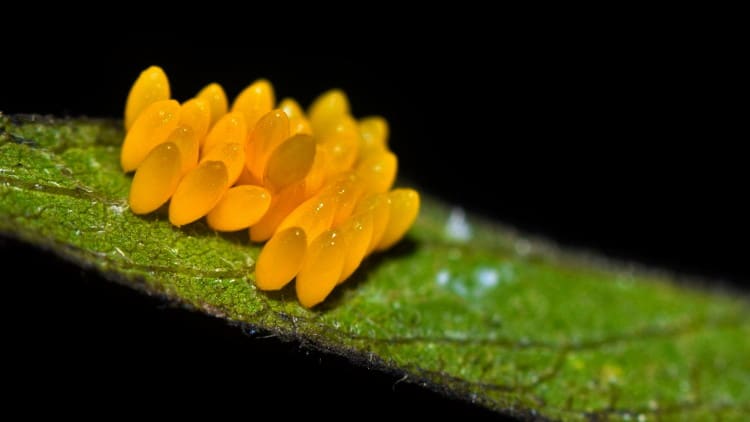
Egg laying continues on into July, with each female laying as many as 1,000 eggs in some species. Many of the carnivorous species lay their eggs near aphids, ensuring their young a supply of food. Eggs take about 4 days to hatch depending on temperature, ranging from 10.3 days at 15C to 1.8 days at 35C.
The Coccinellidae larvae moult 3 times (that is they have 4 instars) and after about 3 months, depending on the density of aphids they pupate. The ladybug larvae, when small, are often smaller than the aphids they are eating – and it is not uncommon to see a large aphid carrying a small Ladybug larvae around on its back.
A 7 Spot Ladybird larva will consume more than 300 aphids before it pupates.
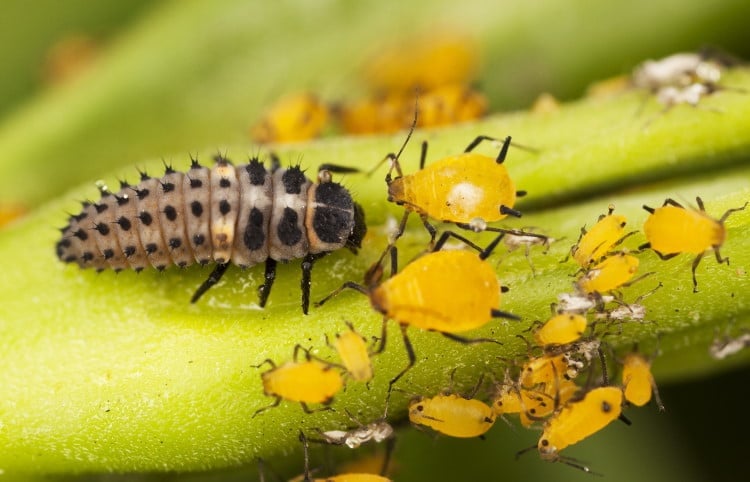
The prepupal stage (the time between when the ladybug larvae ceases eating and attaches itself to the substrate – and when it actually becomes a pupa in a pupal skin) looks hunched. In most cases, the larval skin is shed as the larva becomes a pupa – but remains wrapped around the posterior (tail) end of the pupa which is attached to the substrate.
Though the pupa is attached at one end and in a state of morphological change, it is not always immobile and will flick its anterior (head) end up and down if annoyed. This action possibly evolved as a deterrent to Hymenopteran pupal parasites, making it difficult for them to oviposit (lay their eggs).
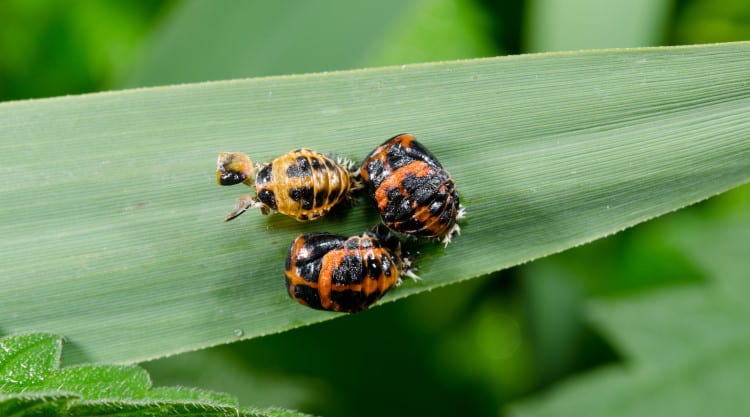
Emergence generally occurs after about one week, depending on temperature. The pupal skin splits along the back and the adult climbs out, then rests while expanding and drying its wings. The elytra are a pale yellowy-orange at this stage, but soon brighten up after a few hours or days.
The new Coccinellidae adults then feed for a few weeks, before dispersing and finding an overwintering site. Most Ladybugs are univoltine (having one generation per year) but some, such as the 2 Spot Ladybird (Adalia 2-punctata) and the 14 Spot Ladybird (Propylea 14-punctata), may be semivoltine (having 2 generations per year).
What Next?
Well, I hope this introduction to magical lady beetle has been interesting!
Perhaps now you’d be curious to learn more about the burying beetle.
Bibliography
- Exell, A.W. (1991). The History of the Ladybird. 2nd edition. Erskine Press.
- Hodek, I. (1973) Biology of Coccinellidae. Junk: The Hague; Academia: Prague.
- Majerus, M.E.N.and Kearns, P. (1989). Ladybirds (Naturalists’ Handbooks 10). Richmond publishing. Slough England.
- Majerus, M.E.N.(1994). Ladybirds HarperCollins publishing, London, Sydney, Toronto, etc.
- Moon, A. (1986). Ladybirds in Dorset A guide to their identification and Natural History Dorset Environmental Records Centre, Dorchester England.
- Williams, C.B. (1960). Ladybirds. BBC Naturalist, 2 pp105-109.

